IMP - An Integrated Multimodal Pointer
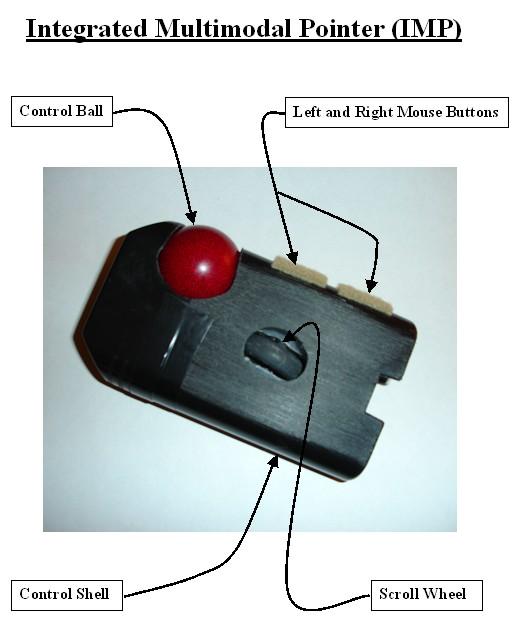
The IMP is an Integrated Multimodal Pointer for a computer that can be used in several different ways. The IMP can be used as a surface mouse, or as a surface trackball, or standing vertically. More significantly, the IMP can be used in the air in any orientation. It can also be set within different types of stands to provide various kinds of additional effects, like tactile vibrations for gaming, or fixed-angle desk use. The particular mock embodiment shown in the attached photos is plastic and measures 4 3/8” x 2 1/2" x 7/8”, with a 1 1/4" diameter trackball. In this embodiment the trackball mode is achieved by supporting the embodiment on an angle over a pen or pencil. Other embodiments utilize built-in trackball methods.
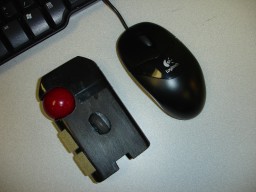
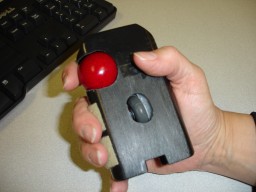
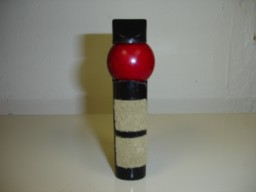
In a typical use, the IMP housing is grasped palm to the rear edge, with the fingers curling around the device so that the index finger reaches the control ball, the middle finger reaches the front-positioned top (equals left) function button, the ring finger reaches the lower front-positioned (equals right) function button, and the little finger reaches below the device for support, while the thumb curls around to be in position to operate the side-mounted scroll wheel.
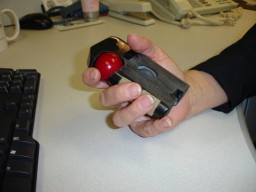
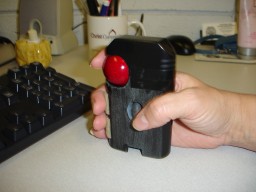
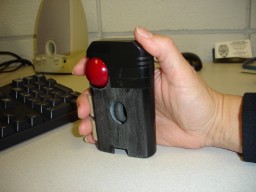
In this grasping position, the control ball typically rotates by using an index finger rather than a thumb, but a thumb and index finger can also be used together to manipulate the control ball for precision pointer movements. Although the two function buttons are front-positioned, one over the other, when the device is on its side in mouse or trackball mode, the buttons continue to be used in the same way. This makes for simpler mode shifting.
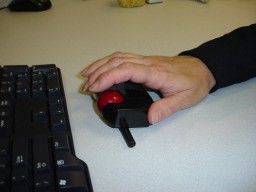
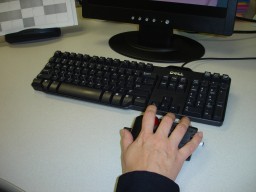
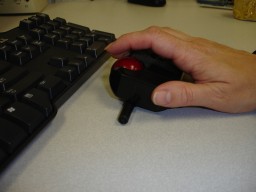
The IMP works equally well for right or left-handed users, and fits almost any size hand. A larger hand reaches further around the ball and the buttons, and a smaller hand operates the ball and buttons with the fingertips. The IMP could be made using any size ball with a proportionally sized housing shell. In a more realistic model, the control ball would have a more frictional surface coating. This would make it operate more efficiently against a smooth surface. In a real model, ball removal for cleaning or replacement would likely be done using a hinged or snap-off cap.
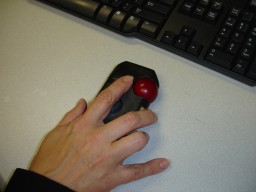
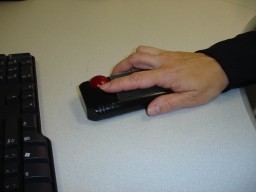
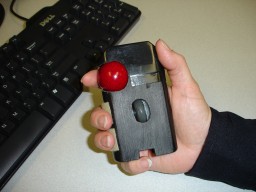
We have probably all had the experience of over-using a mouse, and the occasional experience of feeling soreness in the back and shoulders from being in the required hand-on-the-pointer position. What the IMP offers is the freedom to change your wrist and hand orientation as you wish. You can also lean back, or stand up, or even walk away from the computer, and still use the IMP. Obviously, this feature also makes the IMP ideal for laptop presentations.
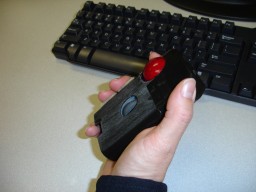
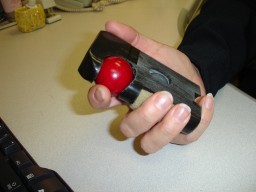
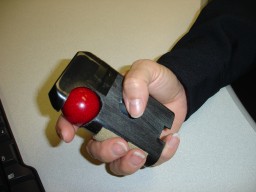
The control ball and scroll wheel in the IMP were appropriated from a disassembled wireless trackball, each of which components respectively requires only one very small optical sensor. The miniature electronic workings from the wireless trackball would easily fit within the confines of the IMP housing. Likewise, the two function buttons would utilize the same miniature electronic switches. Since the IMP uses standard, inexpensive, wireless circuitry, it would be inexpensive to produce. Put that together with the fact that no computer pointer on the market can do what the IMP does, and you have an attractive combination.
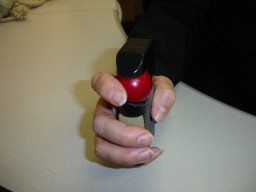
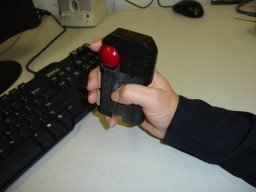
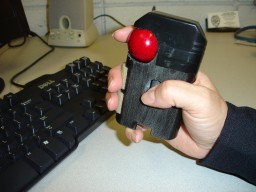
The IMP is a practical and easy to operate device, as well as an exciting new piece of computer hardware. And it can be easily provided with standard computer pointer features, such as the shown scroll wheel, or other programmable keying buttons. If desired, an add-in optical sensor could also be easily placed in the device for use in its mouse mode. The IMP is comfortable to hold for use in any orientation or mode. It is no larger than a standard mouse, and would be as lightweight and easy to handle. The IMP is intuitively simple to understand, and offers an entirely new way to work and play on a computer by providing use choices that were never previously available.

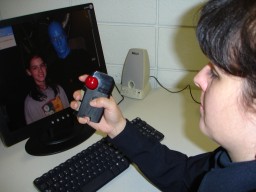
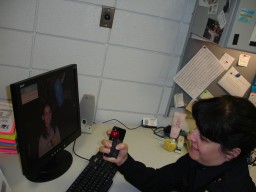
If a basic IMP embodiment were offered at a reasonable price, the multimodal method would likely catch on quickly. Assuming that's true, a number of alternate IMP designs and related devices suggested in the patent could be commercialized to increase the product line.
The IMP has been shown without explanation to a number of computer users. On first sight, most people seem perplexed at the device, and so usually ask, “What is it?” When told that the device is a computer pointer that operates in multiple modes, they seem skeptical of that possibility.
When the device is then picked up and held in various orientations and modes, they are typically amazed and fascinated with the IMP.
And they want one!
Abstract of Multimodal Pointer Method
A multimodal pointer method, comprising an elongated, graspable, control shell which has a rotatable, multi-axis control ball encoder positioned so that it may be used in multiple modes, with a minimum of two function keys that can be used in all modes. The device may either be used at various orientations in-air, or be used in-air against a surface, or may be used downward on a side on a surface and used as a mouse, or be alternately used upward on a side as a trackball, and, in a preferred embodiment, may be used upright on its base, or on a cooperative static or dynamic, surface or suspension base stand which introduces other cooperative features. The method further comprehends the incorporation of a second, front or side-mounted pointer device, typically a single-axis wheel encoder or a multi-axis auxiliary control ball encoder, and other programmable switches, and may be used either wired or wirelessly using incorporated or intermediately connective data transmission components.
For information on licensing the IMP patent, please Email: JixisGMS@aol.com